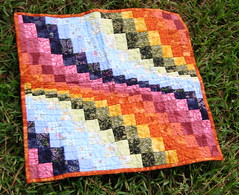
Are you the breadwinner? Need to get your little business to produce revenue as fast as possible? The bills need to be paid?
WHERE TO START
Is your business a service business? Are you going to offer training, or writing, or graphic design, or event planning? If so, you probably are not going to the bank to borrow money. You don’t plan to buy equipment; you have a computer and you are home based at the moment.
YOU NEED A CLIENT
At this emergency moment you need a client who will pay you. You do not need a business plan. You need a marketing plan to produce prospects. And out of those prospects you need to secure a client. Think about the fastest way to find your ideal client. If you are a photographer serving corporate clients, you need to go to events where you can meet corporate people. Corporate people go to Chamber events. If you are an event planner, you need to be in the room with people who are responsible for their firm’s business events, adminstrative professionals. If you are a graphic designer, you need to be around small business owners (established – because they can pay) and non-profit organizations who need upgraded materials. The small business owners are at business expos, lead groups and boards of trade. The non-profit organization managers are at their association meetings.
WHAT DID THAT JUST TELL ME?
Ok, so what did that paragraph just say? You figure out where your best prospects are going to be, and you go there.
HOW DID I KNOW THAT?
There are three ways to connect with prospects if you are an individual professional with services to offer.
THREE WAYS TO CONNECT WITH PROSPECTS:
1) Find out where they go and go to the same place
2) Find out their addresses and mail or call on them
3) Find centers of influence who already know them and secure referrals
CONNECT WITH PROSPECTS #1
So we just started to discuss the first way. Find out where they go and go to the same place. Talk with your business supporters or your Boardroom Group about where you will find the ideal prospects for your services. Look in the datebook in local newspapers and business magazines. Find the dates and places that your prospects will be in the room. You know you can attend because they list member price and non-member price – that’s YOU – the nonmember. You are welcome. They want you to attend.
CONNECT WITH PROSPECTS #2
A second way to quickly connect with prospects is to find out their address and call on them, or mail to them, or send a newsletter to them. The main library always has a computer with all the names of the companies and organizations in the U.S. It is searchable by city, county, or industry code. Ask the business/reference librarian to show you the computer and how to use it. You can print lists, or details about the organizations. It will tell you the number of employees and names of officers. Perfect information to get started – and it is FREE.
CONNECT WITH PROPECTS #3
A third way to connect with prospects is to identify those professionals who already know many of these organizations and what services they may need. A CEO of a small manufacturing firm will ask a current trusted consultant for names of other service company owners for additional outside services. You identify local consultants and service providers, then you invite them to breakfast, coffee or lunch. You indicate that you will be meeting a lot of people and you would like to know the kind of referrals they would like to have. Trust me, after learning about them and the referrals they would like to have, they will ask you what type of referrals you want to have.
STORY
A long time ago a woman IT professional who wanted to install accounting software for small companies and non-profits ask me to join her for coffee. She told me about her services and ask me if I would refer her if I came across someone who needed her. I was familiar with accounting software (previously I was a Controller in a manufacturing firm) and she knew her stuff, so I said “yes.” If was not more than two or three weeks when someone asked me for the name of any referrals I might provide for this type of work. And she got the job!
JUST DO IT
So if you are the breadwinner in your family and you need to quickly start securing clients, delivering services, and making deposits in your back account, think about the best way to reach your prospects and start this low-cost marketing as soon as possible. Soon you will have clients and will be growing your business.
 The video on this link — talking about Where do New Ideas Come From is good information and so much fun to watch. Stay until the end and be surprised. See how much you can learn from this video about the ideas you have dreamed about, perhaps your best business idea yet!
The video on this link — talking about Where do New Ideas Come From is good information and so much fun to watch. Stay until the end and be surprised. See how much you can learn from this video about the ideas you have dreamed about, perhaps your best business idea yet!

















